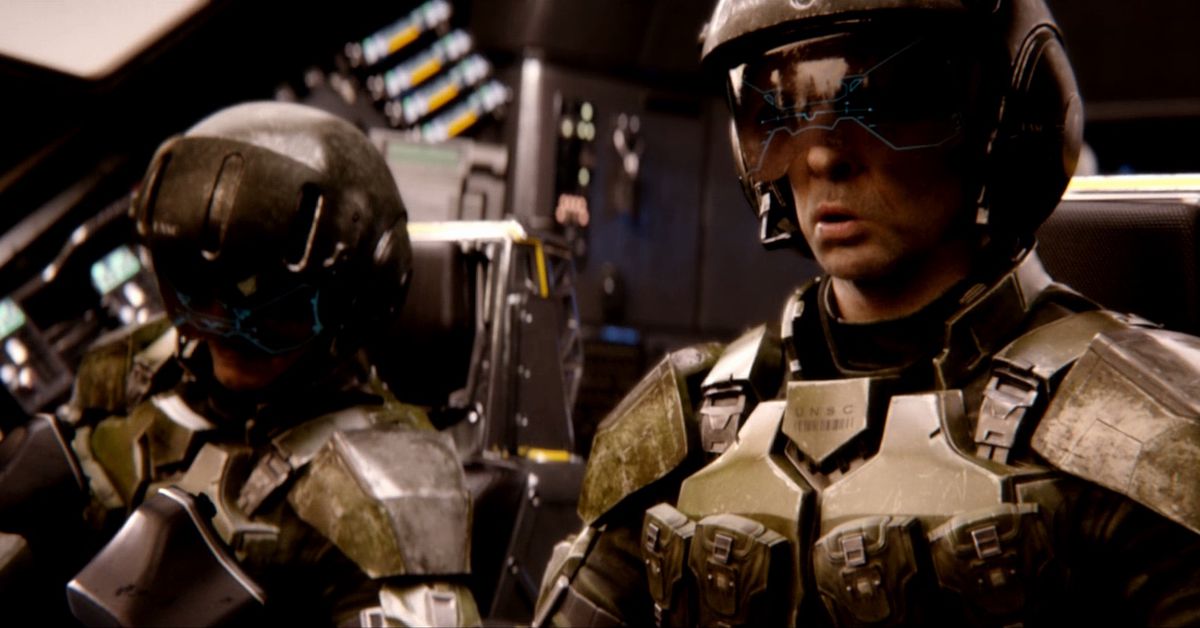
Look closely, and you’ll find plenty of real-world influence in the sci-fi series
When Halo: Combat Evolved arrived in 2001, it came on the heels of the Sept. 11 attacks in New York City and Washington, D.C. While the game had been years in the making, its creators had no idea that their product would arrive on the doorstep of what would eventually become the United States’ longest-running conflict: the larger War on Terror in the Middle East, and the 20-year campaign in Afghanistan.
The War on Terror would have a transformational effect on the U.S.’s armed forces, prompting a host of changes in how the country wages war, from the weapons, systems, and equipment that the military takes onto the battlefield. The conflict’s impact wasn’t limited to the edges of the battlefield, and its influences can be seen in everything from our political discourse, to the clothing we wear, to the entertainment we consume every day.
The Halo series turns 20 this year, and in doing so, it brackets the War on Terror, providing a snapshot of the evolution of how the military wages war, and how that militarism has seeped into popular culture. The people we interviewed who were involved with the franchise say that the events of the terror attack and the wars that followed didn’t directly impact the direction of the games, but the weight of the war made its presence known around the edges, through small changes and evolutions that appear throughout the series.
Military science fiction has always had a strong connection to the state of the modern-day military. Warfare is present all the way to the roots of the genre; H.G. Wells’ War of the Worlds explores Britain’s relationship with colonialism, while the advent of the Cold War and the prospect of nuclear destruction prompted Robert Heinlein to muse about citizenship and power-armored soldiers in his 1959 novel Starship Troopers.
As such, when Halo got its start, Bungie had plenty of inspiration from the world of science fiction to draw upon, ranging from epic space opera novels like Larry Niven’s novel Ringworld and Iain M. Banks’ Culture series, to gritty military science fiction books like Heinlein’s Starship Troopers and Joe Haldeman’s The Forever War, and to films James Cameron’s Aliens and George Lucas’s Star Wars.
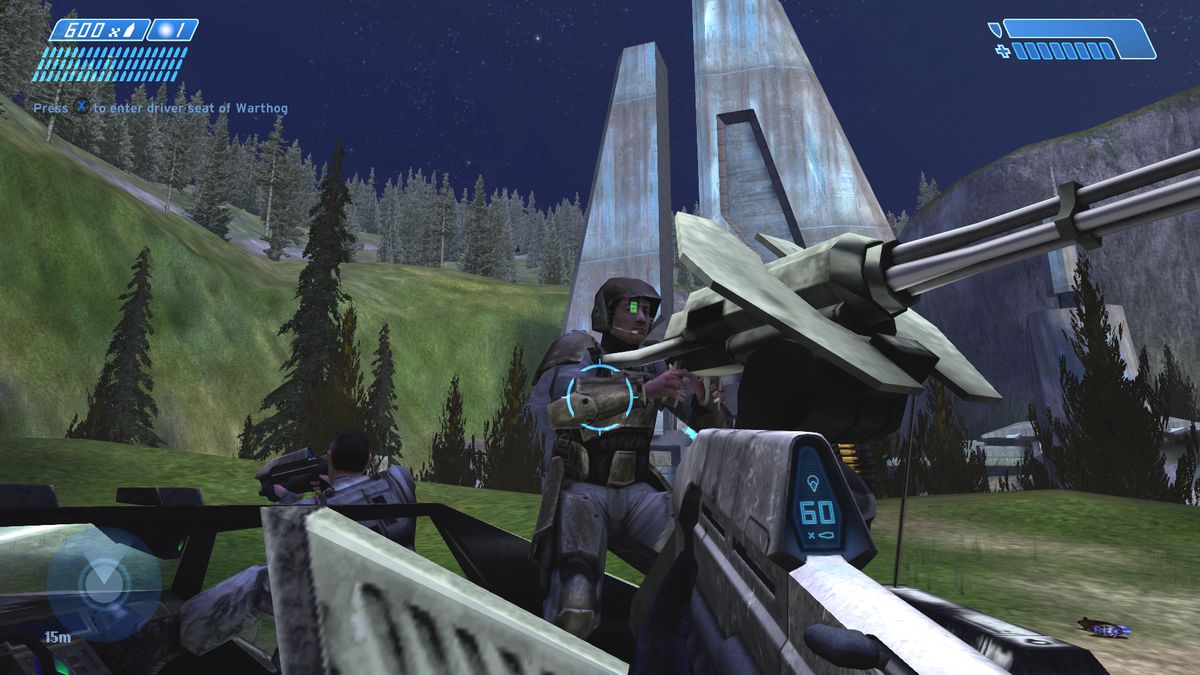
HaloImage: Microsoft
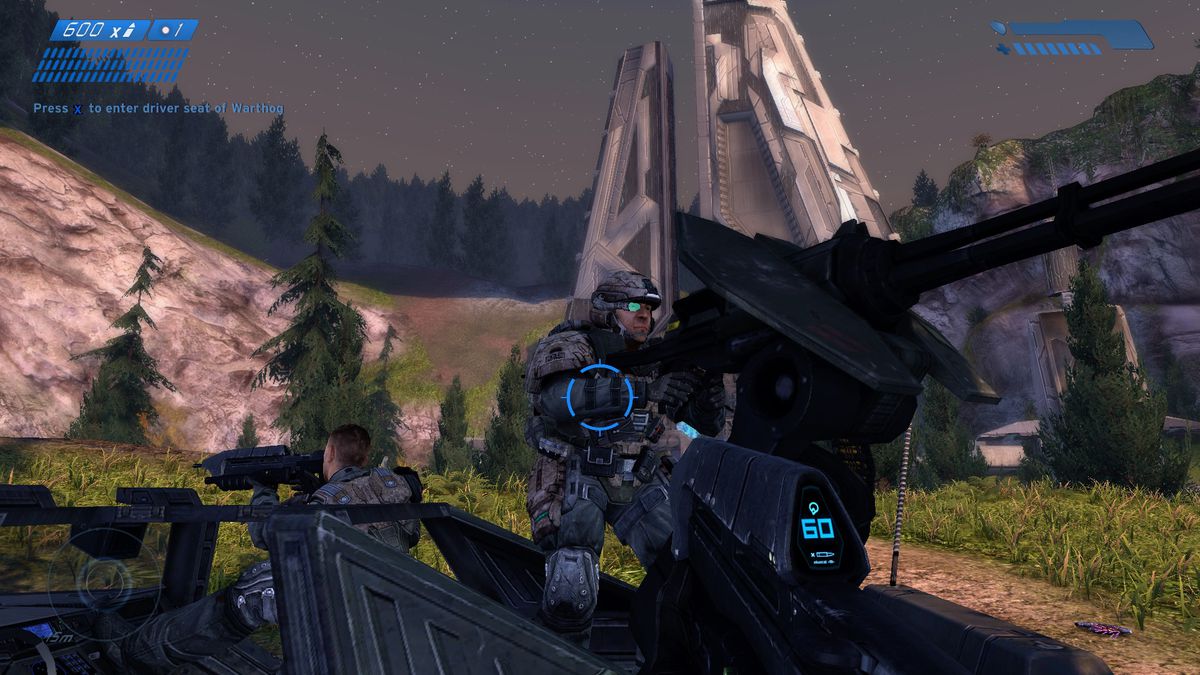
Halo: AnniversaryImage: Microsoft
But those early designers also wanted to inject a level of familiarity for players. The world of Halo featured not only fantastical megastructures like alien rings and ancient technologies, but the blocky human ships and weapons that were designed to look and feel like they were congruent with the world we presently live in.
Joseph Staten, Bungie’s director of cinematics for Halo: Combat Evolved, Halo 2, and Halo 3, says that while the studio drew on a variety of science fiction classics for inspiration, “the primary goals for the human United Nations Space Command (UNSC) hardware in the early games were familiarity and contrast. As we launched players on an epic space adventure, we wanted them to immediately feel at home driving the human vehicle or holding the human weapons.”
To get that familiarity, Halo’s designers looked to the real world, pulling inspiration from then-modern military technology and design. “I used all kinds of military reference,” says Marcus Lehto, Bungie’s creative art director for the franchise up through Halo: Reach, “for the creation of many things like the Chief, Warthog, Pelican, Scorpion, and Marines.”
Staten points to the color scheme for the weapons and soldiers as an example: “UNSC gear is mostly subdued greens and browns — colors you would expect if you’re familiar with modern military gear — whereas Covenant colors are bright purple or orange or even gold. By rooting the UNSC military hardware in the familiar, we created space to explore the exotic.”
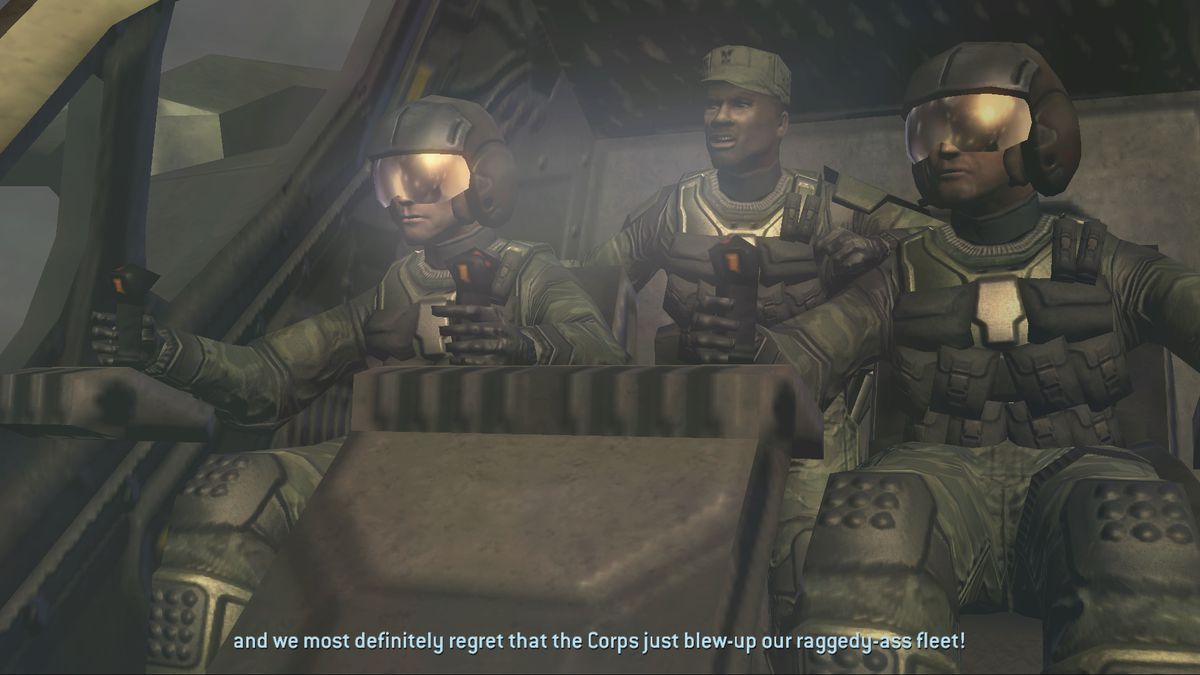
Halo 2Image: Microsoft
As a result, the design of Halo’s military world feels both science fictional and familiar at the same time. The UNSC Marines are covered in blocky body armor that feels like a natural progression from the post-Cold War U.S. military. Following the collapse of the Soviet Union in 1989, the U.S. military underwent not only a downsizing, but changes in how it outfitted its personnel: the U.S. Army introduced new uniforms and systems for soldiers to carry equipment, upgrading equipment that was held over from the Vietnam war.
With the onset of the War on Terror in the 2001 conflict in Afghanistan and in Iraq in 2003, the U.S. once again began to rethink how its personnel were outfitted. The broad swirls that made up the M81 Woodland camouflage used in the 1980s and 1990s gave way to the muted greens and tans of the Universal Camouflage Pattern in 2005, and the MOLLE (Modular Lightweight Load-Carrying Equipment) system — pouches that could be mounted onto customizable attachments — became widely adopted in 2003 as the U.S. launched its offensive in Iraq.
These changes came about because of the in-the-field experiences that the military faced, says Matthew Callahan, a former Marine who served in Afghanistan as an infantry assault Marine and later as a combat photographer in Syria who created the Galactic Warfighters photography series in 2015. Specifically, he says, it was the two decades of combat that saw continual refinements in the types of equipment that soldiers carried into battle: “Marines look closer to Special Forces now than they ever have. They’ve got suppressors on their weapons, they have the half-shell cut helmets with the Peltor hearing protection, all kinds of stuff.”
A key driver of that change is the resources made available to the special forces community. “They are very small and they have a budget that eclipses most anything that you can possibly imagine,” Callahan says. “They’re constantly playtesting equipment.” The result is a trickle-down effect that sees equipment move from SOCOM to the other branches of the U.S. military. He pointed to one example of where he’s seen these sorts of upgrades: while in Syria in June 2017, the Marine Corps commandant, general Robert Neller visited the country and the Marines stationed there. “The common sentiment was like, ‘Hey sir, we need these over-ear hearing protectors,’” Callahan says. “‘Every single Marine needs them.’ Look a year and a half, two years later, and every infantry marine pretty much has them now.”
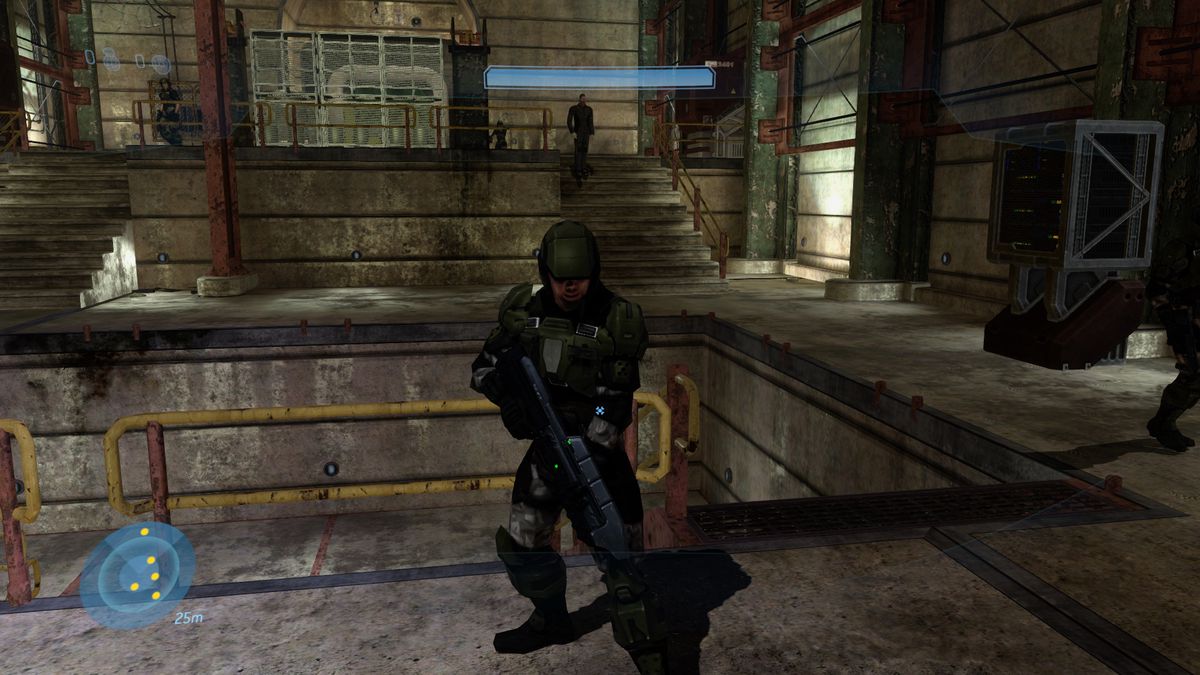
Halo 3Image: Microsoft
The same sort of evolution takes place within the world of the Halo universe, as humanity has been at war with the Covenant for decades (the in-universe dates run from Feb. 11, 2525 to Dec. 11, 2552). Josh Holmes, creative director for Halo 4 (and producer for Halo 5) says, “If I recall correctly, we did talk about the length of the war and its impact on equipment in the field. We also tried to take into account the continued advancement of military technologies over time, alongside research into some of the alien technologies recovered from the Covenant. We were walking a fine line, because we wanted the updated designs to feel like a natural evolution of the already established UNSC aesthetic, but with this modernization in mind.”
From game to game, it’s easy to see the changes and upgrades that take part as the war advances. Between Halo 2 and 3, the Marines and Orbital Drop Shock Troopers get some updates to their respective kits: new armored plating to better cover their torsos, limbs, and heads, in ways that look as though they’re designed to both enhance their maneuverability and safety. By the time we pass the end of the Human-Covenant war in Halo 4, the marines are outfitted with even more specialized gear. Their chest armor includes strapping, MOLLE strips (to attach equipment and pouches to), and helmets that look more akin to what real-world soldiers are wearing. The Marines don’t make an appearance in Halo 5’s campaign, but the security contractors on Meridian Station boast similar armor and equipment, while their existence seemingly mirrors that of the growth of the military contractor field. Collectively, those changes to the equipment take into consideration the changes that any military undergoes when it’s continually in action for decades, whether it’s 20 years of the War on Terror, or the Earth-Covenant War. In both instances, that experience is demonstrated with hardware that’s changed to improve adjustability and comfort for the wearer, the ability to customize one’s kit, and the introduction of safety improvements, like better coverage or hearing protection.
Holmes says that the War on Terror didn’t play an explicit role in driving their designs for the game, but that “we’re obviously influenced by our experience in the real world, and we did want to bring a more realistic perspective on what it would be like to engage a hostile alien force.” Those discussions, he says, helped inform how they developed the weapons that the UNSC used: “We tried to update the design language for the UNSC and draw inspiration from modern military equipment to help ground things for players.”
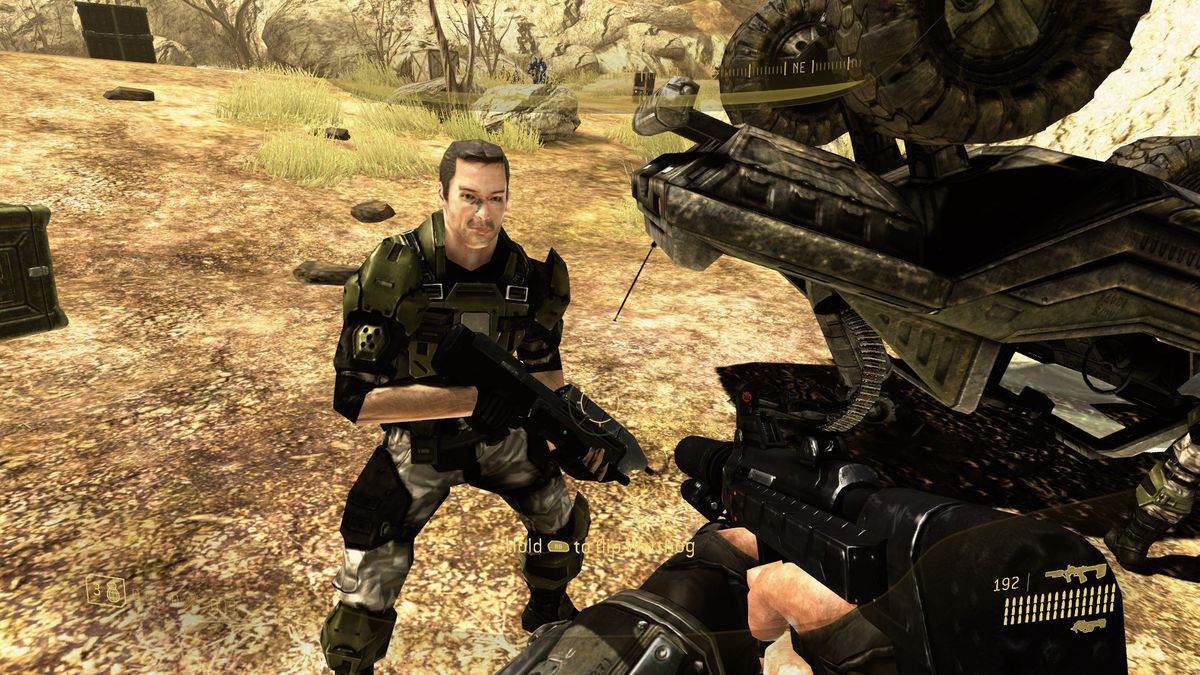
Halo 3: ODSTImage: Microsoft
Lehto also says that he wouldn’t characterize the games as deliberately keeping pace with the changes to real-world gear while he was working on the franchise: “I would not say that we kept up with the War on Terror and evolution of gear for that in any way. Halo, while always grounded in something familiar, carved out its own aesthetic, which just improved in fidelity over the years as the engine tech and rendering capability improved.”
A key factor in the design changes, he says, was that the Halo games underwent an evolution as a direct result of the increases in computational power that the Xbox lineup saw, first from the original device all the way up to the current Xbox Series X. “As the engines and the consoles improved,” Lehto says, “it dramatically changed our polygon and texture budgets for all assets in the game, allowing us to build much higher resolution content with more detail.”
That increase in detail enabled Halo’s artists to build upon the original aesthetic of the characters, allowing them them to add in ever-more realistic details to the world — everything from the straps and buckles that held on a Marine’s armor, to the pouches, equipment, and gear that they wore, down to the wrinkles on pockets and uniforms. The team kept the same design principles while including more detail that retroactively modernized the types of gear that the UNSC soldiers carried with them across the galaxy.
But while the gear does adhere to an in-universe design principle, there are new additions that appear alongside their real-world counterparts. The helmets that the Marines sport in Halo 4 feature the universal night vision goggle mount on the center of each helmet’s forehead, something that the U.S. military has widely adopted, while others have features that look quite a bit like the Peltor hearing protectors integrated into the design. Others have body armor that comes with MOLLE strips for mounting equipment, and other features like knee pads that are part of pants; all of these are features have become commonplace in comparable, real-world uniforms seen on battlefields today.
Callahan points out elements like the introduction of the M392 Designated Marksman Rifle in Halo: Reach as one example of when Halo’s designers have taken some cues from the real world: “That is an acknowledgement that designated marksmen exist [in the Halo universe] — we had them on our deployment,” he says. Other moments include other bits of hardware from throughout the world to the inclusion of the ODSTs in the franchise.
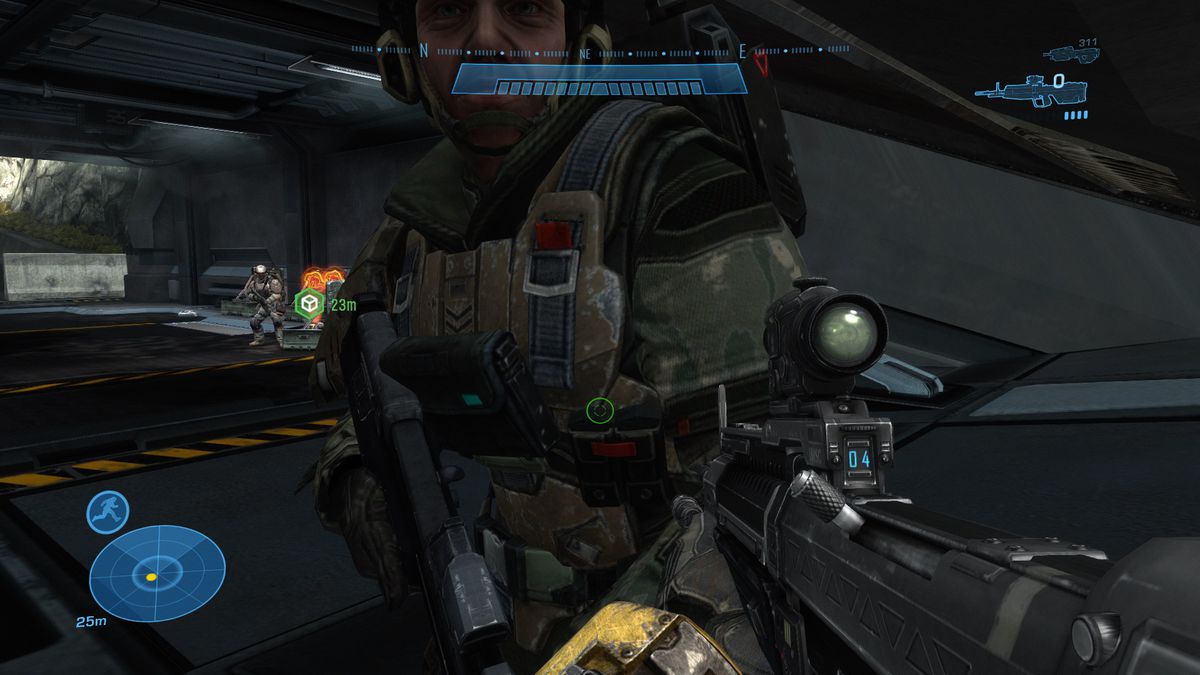
Halo: ReachImage: Microsoft
Callahan says that these sorts of design inclusions aren’t just limited to just Halo; other franchises have taken design cues from what modern militaries equip their soldiers with, ranging from projects as varied as Rogue One, The Force Awakens, Battle: Los Angeles, or Stargate SG-1. “The First Order troopers,” he says, had “the first introduction to a chest rig that we’d ever seen in Star Wars” — a wholly modern design element to a franchise that originally drew much of its inspiration from Vietnam and World War II. “The reality is,” he says, “that America has been engaged in a protracted war in Iraq, Afghanistan, Syria, and the Middle East, and that’s precisely why we get that bleed into our popular culture.”
Since the start of the War on Terror, critics have raised concerns about the prospects of excessive militarization of non-military spaces. Police departments routinely utilize surplus military hardware and equipment, for instance, a trend that the ACLU says makes police forces more hazardous to operate in the communities that they serve.
That militarism extends into popular culture as well. The military and the entertainment industry have collaborated for decades, producing films to sell conflicts abroad to the American public. In other instances, that partnership has been a bit less on the nose, with the various branches of the U.S. military serving as consultants. Callahan points to Halo: Reach as one example of where military consultants helped to increase the authenticity of the military world: “ONI, the Office of Naval Intelligence, ‘Winter Contingency,’ the radio communique, the chatter, and just the way that everybody conducted themselves — it’s as if the folks at Bungie just hung out with Navy SEALs for like a year.”
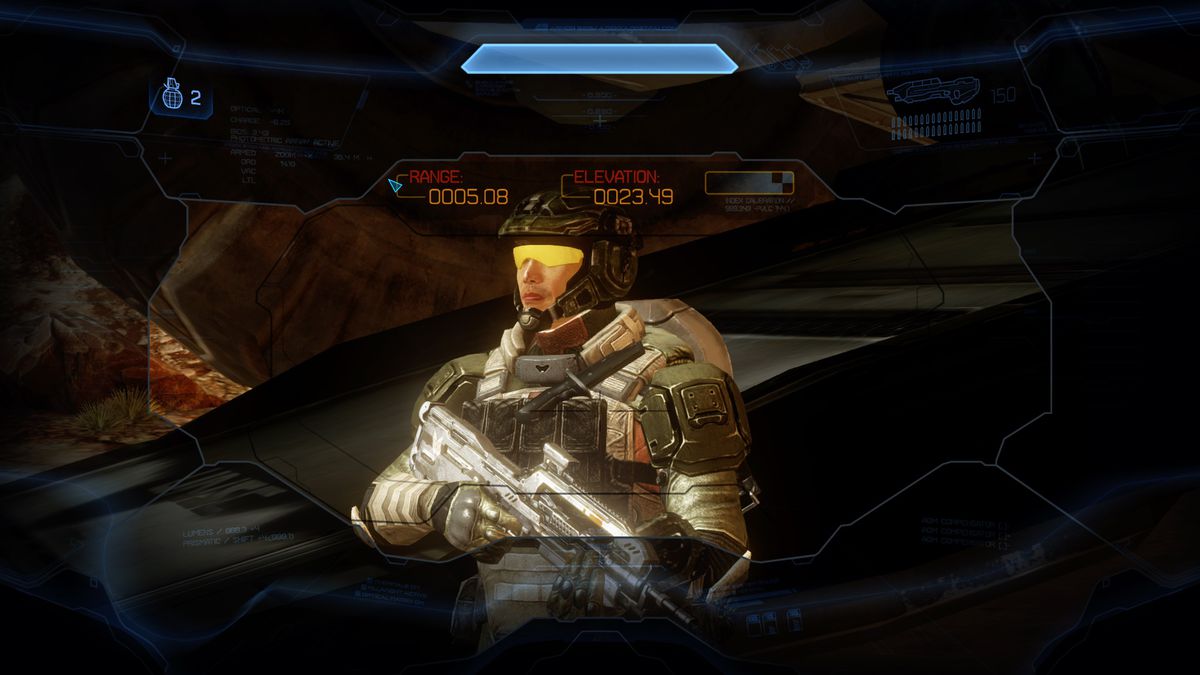
Halo 4Image: Microsoft
That reverence for the military can carry with it some darker elements. “The big picture implication,” Callahan says, “is January 6th. That is the big picture implication —radicalization. It’s feeling like you need to militarize yourself to defend yourself, and to just enact that violence on others.”
“That bleeds over into our popular culture with games like Call of Duty. It’s not that playing violent video games makes you violent. No, it sows the seeds to become a violent person,” Callahan says. “It’s not the only thing. It’s just the nature of social media and how the internet echo chamber works. You take this trickle-down effect and this armor, this gear, all of this high-speed, low-drag equipment designed for people operating under circumstances in which they have a 50/50 chance of coming out alive — actual warfare, actual combat — and you see it at every far-right, extremist protest here. It’s like everybody’s arming themselves. Everybody has a right to defend themselves — I’ll never disagree with that assertion — but this isn’t that.”
The need to portray authentic military culture, nomenclature, and equipment makes sense for a game franchise like Halo; audiences crave realism and the thrill that it can bring. But it’s worth observing and understanding the cost, and the need to ensure that there’s a clear-cut divide between literal war zones and the civilian world, because of the tendencies that it brings. As the saying goes, if all you have is a hammer, every problem looks like a nail. If you’re surrounded by the fixtures of a military lifestyle in all aspects of civilian life, it’s easy to see threats where they don’t exist.
